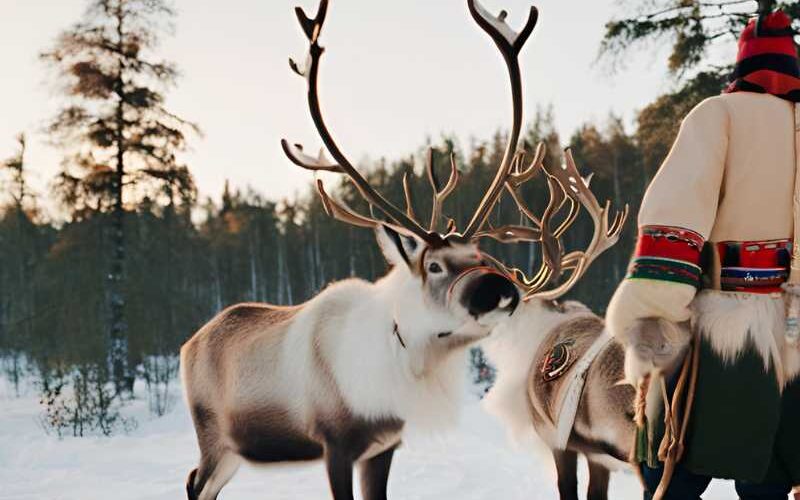Sámi Lapland is a fascinating region that spans the northern parts of Sweden, Norway, Finland, and Russia. This area, also known as Sápmi, is home to the Sámi people, an indigenous population with a rich culture and history that dates back thousands of years. Sámi Lapland is known for its beautiful and wild nature, featuring vast mountains, deep forests, and sparkling lakes. This landscape is not only a habitat for the Sámi but also a central part of their cultural and spiritual identity.
Historical Background
The history of the Sámi in Lapland stretches back at least 5,000 years. The first Sámi were nomads who followed the reindeer, their main source of food, clothing, and tools. Reindeer herding has been a central part of Sámi culture and economy for centuries, and it remains important today. Over the years, the Sámi have adapted to the changing climate and environmental conditions of Lapland while preserving their traditions and knowledge.
During the medieval period and beyond, the Sámi came into contact with other cultures and kingdoms, including the Swedish, Norwegian, Finnish, and Russian authorities. These interactions led to changes in the Sámi way of life and culture. Throughout the 19th and 20th centuries, the Scandinavian countries attempted to assimilate the Sámi through various policies, resulting in the marginalization of Sámi culture and language. Despite these challenges, the Sámi have preserved their identity and continue to fight for their rights and culture.
Culture and Traditions
Sámi culture is rich and multifaceted, with many traditions that have been preserved through generations. Reindeer herding is a central part of Sámi culture, but the Sámi are also known for their crafts, music, and oral traditions. Sámi crafts, or duodji, include everything from clothing and jewelry to tools and everyday items, often made from materials like reindeer antlers, leather, and wood.
Music plays an important role in Sámi culture, and joik is perhaps the most well-known form of Sámi music. Joik is a traditional singing style used to tell stories, express emotions, and honor nature and ancestors. Each joik is unique and can be dedicated to a person, place, or event. Joik is not only an art form but also a way to preserve and transmit Sámi culture and history.
Language and Education
Sámi languages are a group of Uralic languages spoken by the Sámi people. There are several different Sámi languages, with Northern Sámi being the most widely spoken. Other Sámi languages include Lule Sámi, Southern Sámi, Inari Sámi, and Skolt Sámi. For much of the 20th century, Sámi languages were marginalized and often banned in schools, but since the late 20th century, there has been a revival and revitalization of Sámi languages.
Today, Sámi education is offered in schools in Sámi areas, and there are Sámi preschools, primary schools, and secondary schools. Additionally, universities and colleges offer courses and programs in Sámi and about Sámi culture. Education is a crucial part of the effort to preserve and strengthen Sámi identity and culture.
Present and Future
The situation of the Sámi today is characterized by both challenges and progress. In many places, the Sámi still fight for their rights, including the right to land and water, cultural autonomy, and recognition of their traditional lifestyle. The Sámi Parliament, established in Sweden in 1993, is an important forum for Sámi political representation and advocacy for their rights.
At the same time, there are many initiatives to promote and preserve Sámi culture. More and more Sámi youth are choosing to learn their language and engage in traditional livelihoods such as reindeer herding and crafts. Sámi artists, musicians, and writers contribute to spreading and developing Sámi culture both within and outside Sápmi.
An important part of the future for the Sámi involves balancing tradition and modernity. Many Sámi live in cities and work in various professions today, but they still maintain a strong connection to their culture and traditions. By combining traditional knowledge with modern technologies and methods, the Sámi hope to create a sustainable and thriving future for future generations.
